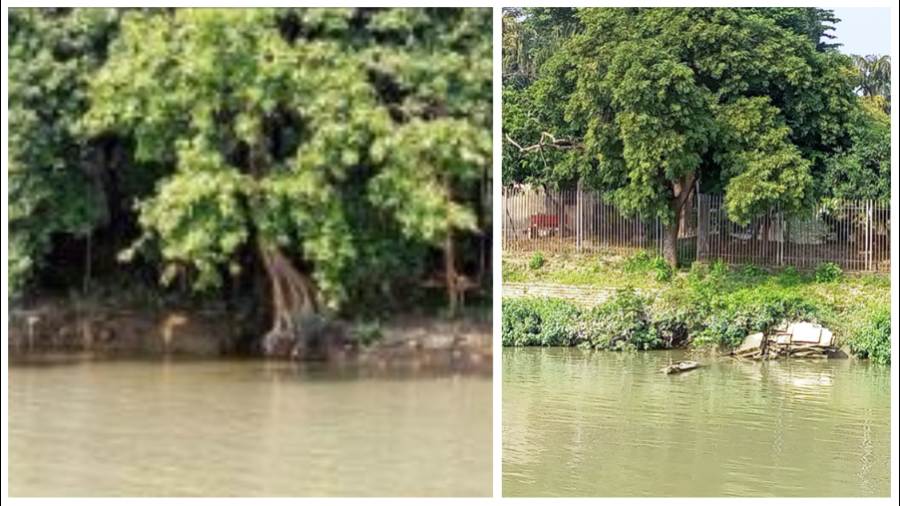Indian Botanic Garden in Howrah, the country’s largest botanical garden that is located along the Hooghly river, is affected by severe erosion and parts of its fencing may collapse anytime, river experts who surveyed the garden on Tuesday said.
The survey team, accompanied by The Telegraph, inspected the entire 1.8km stretch of the west bank of the river that adjoins the 270-acre garden.
Environment activist Subhas Datta, a Howrah resident who was part of the team, showed how the zone was affected. Many trees have either toppled or are on the verge of toppling over under the impact of the erosion by the Hooghly. Old concrete slabs adjacent to the garden fencing seemed to have cracked at several points.
Senior officials of the garden admitted that the situation was “grave” and said they did not have enough funds for repairs.
“The situation has turned extremely grave in recent time with the river eating into land fast. Unless the authorities concerned from the Centre and the state take immediate action to control erosion, the garden will be severely affected and the nearby habitations will be under threat, too,” said Datta.
The activist said he was planning to move court seeking immediate redress.
“The erosion has increased significantly over the last few years. When we surveyed the area while studying Ganga pollution about a decade back, we did not notice such erosion,” said Ujjal Mukherjee, retired chief scientist of the West Bengal Pollution Control Board.
A.A. Mao, director of the Botanical Survey of India and head of the garden in Shibpur, admitted that the erosion had reached a critical level. He blamed a nearby jetty for some of the problems.
“The water is coming bouncing back from the concrete structure (the jetty), affecting the bank. That’s why the erosion is maximum close to the jetty,” Mao said.
“We had earlier tried to raise a mangrove plantation on the bank to counter the erosion, but most of the saplings got washed away during high tide. Now, we are planning to plant larger mangrove plants…. We do not have money to undertake measures such as bank protection with boulders and through concretisation.”
Kolkata Port Trust passed the responsibility to the state government and the garden.
“We mainly maintain the river banks close to major navigational channels and also the areas which the National Green Tribunal has directed us to maintain. The responsibility of maintaining the bank you are referring to mainly lies with the botanic garden and the state government,” said an official of the port trust.
“We have not received any complaint on erosion. Since the area in question is part of an institution of national importance, we will definitely take up the matter with the state government if approached by any person or institution and offer our help,” the official said.
He, however, pointed out that the cost of controlling riverbank erosion was very high and the port trust was reeling from a funds crunch.
